- Home
- Peter Ackroyd
Foundation Page 14
Foundation Read online
Page 14
Henry maintained the borders with Scotland, but did not choose to enlarge them. He built upon his brother’s conquests in Wales by a policy of encouraging Anglo-Norman settlement and of conciliating various Welsh princes; a Welsh chronicler declared that Henry ‘had subdued under his authority all the island of Britain and its mighty ones’. That was not entirely true. The eastern and southern parts of Wales had come under the control of Norman lords, with their panoply of castles and of courts and of burgeoning towns, but the central and northern areas of the country were still governed by the native princes. When many Flemings migrated to the east coast of England, on account of the floods in their own region, the king settled them in Pembrokeshire, where they maintained their own language and culture until the end of the eighteenth century.
He was a strong sovereign, then, but not necessarily a benevolent one. He was concerned only with his own immediate interest, and the government of England became a form of estate management in which all of the available assets of the land were exploited. That was the Norman way. Throughout his reign the monks from Peterborough Abbey lamented ‘manifold oppressions and taxations’. An extraordinary series of bad harvests also undermined the ability of the people to withstand his exactions. ‘God knows’, an Anglo-Saxon chronicler wrote, ‘how unjustly this miserable people is dealt with. First they are deprived of their property, and then they are put to death. If a man possesses anything, it is taken from him. If he has nothing, he is left to perish by famine.’ The king did take care to protect his supporters. When the coinage was debased with tin, Henry’s soldiers complained that their pay was nearly worthless; he ordered that all of the coiners should be castrated and lose their right hands. He cultivated the interests of the magnates, too, by royal gifts and allowances; eulogists duly celebrated the harmony and loyalty of England. The aristocracy, in other words, could always be bribed and bought.
He of course also fostered the interests of his immediate family. He strengthened his authority by an intricate series of marital arrangements whereby his illegitimate daughters became aligned with the various ruling families of Europe. He married his legitimate daughter, Matilda, to the prince of Anjou; from this union a new race of kings would spring.
It was said that he was endlessly inquisitive about the lives of his magnates, and knew of the existence of plots against him before the plotters themselves. He was a man of great natural curiosity, too, and was nicknamed by one of his kinsmen ‘stag foot’; he could determine, from the track of a stag, how many antlers the creature had.
There was one significant event, however, that he could not foresee. It occurred on the evening of 25 November 1120. His sixteen-year-old son and heir, William Adelin, was about to sail from Normandy to England. His party went aboard the White Ship in a festive atmosphere; the presence of an heir apparent always gives rise to gaiety. The crew, as well as the passengers, were drunk. The rowers kept up a frantic pace, but the helmsman was inattentive. The ship rushed on to its fate, and crashed against a large rock hidden just below the waterline. The heir to the throne was drowned, as well as many younger members of the nobility. Only one person, a butcher from Rouen, survived.
A survivor, in another sense, was left alive. The king’s nephew, Stephen, count of Blois, was suffering from a severe bout of diarrhoea and declined to join the revelry aboard the White Ship. Since he would be crowned as king of England fifteen years later, it can plausibly be maintained that an attack of diarrhoea determined the fate of the nation. Statesmen may plot and plan. Learned men may calculate and conclude. Diplomats may debate and prevaricate. But chance rules the immediate affairs of humankind.
It was said that, after the disaster, Henry never smiled again. But that is a line from a fairy tale. More realistic consequences ensued. The problem of succession, for example, soon became acute. Henry had only one legitimate child, Matilda, and he fathered no other children in the latter years of his reign. No woman had ever sat on the throne of England before, but Henry was not deterred. He gathered the principal barons of the land in Westminster Hall, and ordered them to swear an oath that they would uphold the succession of his daughter. Henry had a voice like thunder, and they quailed before the blast. They duly swore. Yet what was unintended and unforeseen once more came to pass. The perilous consequence of the succession was a long civil war.
While hunting in one of the royal forests of Normandy, the king contracted a violent fever. It was reported that his death was hastened by ‘a surfeit of lampreys’, and indeed he had always liked marine delicacies. In one charter he allowed the bishop of London to take porpoises from the Thames ‘except the tongue which I reserve for myself ’. He lay for some days in weakness and confusion; but he confessed his sins, in front of many witnesses, and was given absolution. His body was embalmed but the unfortunate and unskilful embalmer died from the infectious stench that rose from the cadaver; one chronicler, Henry of Huntingdon, remarked that ‘he was the last of many whom King Henry had put to death’. The corpse, leaking what was described as black fluid, was eventually taken to Reading Abbey. This was the abbey that Henry had established as a memorial to his son. Its ruins can still be seen.
It is hard to speak of his achievement in any very positive way. He kept the peace in England. He was a good manager of business, and helped to maintain the administration of the country by appointing what were called ‘new men’. These were Norman or Breton clerks ‘of base stock’, according to Orderic Vitalis, whom the king had raised ‘from the dust’ and ‘stationed above earls and owners of castles’. He worked them hard but rewarded them accordingly. They represented a new class of professional administrators or curiales who stayed in one place and who were not part of the itinerant royal household. They were a sign of central administration.
The king always needed to make money, and the intensification of the royal government was essentially another way of increasing his income. Goods, and land, were forfeited to the king. Plaintiffs of every kind could negotiate a fine, by which they purchased royal favour. This is sometimes described by historians as legal reform. One judge from Henry’s own court was very stern with his contemporaries. ‘From the desire of money we become tyrants’, he wrote. ‘Legal process is involved in so many anxieties and deceits that men avoid these exactions and the uncertain outcome of pleas.’ So much for the description of Henry as ‘the Lion of Justice’. The lion’s law was the law of the jungle.
Other means could be found of making money. The exchequer, with abacus beads for calculation and a court for the audit of accounts, became more prominent during Henry’s reign. The money came from taxes and tolls. A rich orphan could be sold to the highest bidder, who then became his or her guardian; a wealthy heiress could be purchased as a bride. It was just a question of seizing the opportunity. ‘The king enquired into everything,’ Orderic Vitalis wrote, ‘and what he learned he held in his tenacious memory.’
As the king, so the age. In the early twelfth century there was a steady increase in what would now be known as bureaucracy, the word coming from the writing desk or bureau. Written documentation now became an essential element in the calculation of revenue and expenditure. The laws, and other formal rules, were written down. The essential movement of the age was towards systematization and centralization. In this period the two central departments of the court, the chancery and the exchequer, emerged in recognizable form. The chancery, staffed by clerics, dealt with manifold aspects of government business from the writing of treaties to the granting of charters. The exchequer was the department in which all of the king’s revenue and expenditure were controlled. So by slow and almost imperceptible means the English ‘state’ was created. No one was interested in creating a ‘state’. No one would have known what it meant. Yet it was the direct consequence of all these disparate activities.
Henry had never really liked or trusted the English. He did not appoint any of them to high office, but relied instead upon his French clerics and courtiers. ‘No virtue or me
rit could advance an Englishman’, one contemporary wrote. Henry’s son, William, had said that if he ever ruled England he would yoke the English to the plough like oxen. It was perhaps better that he drowned in the Channel. Yet the English had survived, and the slow process of assimilation had already begun. The Norman settlers had indeed settled, and were beginning to refer to England as their true home. A whole world of English song existed. The English monks wrote histories of their foundations and the lives of their local saints.
Another force for the cultivation of England can also be traced. In the early decades of the twelfth century a new order of monks came from France into England. These were the white monks, originally from the abbey of Cîteaux, who were known as the Cistercians. It was part of their unique mission to live far apart from the ordinary habitations of men, and to survive by tilling the soil; the land was supposed to be their sole source of income, and they eschewed all forms of luxury. They were soon established over vast swathes of northern England, where they employed lay brothers as their farm workers. So large tracts of undeveloped country came under the plough. The fens were drained and the forests were cleared; more controversially, however, villages were sometimes destroyed to make way for fruitful fields. The Cistercians soon proved themselves to be excellent sheep farmers, too, and the local economy flourished under their supervision. They became the most significant group of woolgrowers in the country and, despite their profession, they grew rich. That is the story of the Church itself.
10
The road
The ancient roads, the witnesses of prehistoric life and travel, still persisted in the medieval landscape. But they were joined by other highways in the historical period. Many winding lanes between farmstead and farmstead, many sunken hollow-ways leading to the village, deep-set and drowsy on a summer afternoon, were constructed in the twelfth century. It was a great age of building stone bridges that needed roads on either bank, and the growth of towns required the more intensive use of the cart and the packhorse as a means of trade and transport. The ‘Gough’ map, dating approximately from 1360, reveals a network of major roads linking London with the other regions of the country. More small roads and tracks could be found in the thirteenth than in the twenty-first century.
The width for the king’s highways was fixed in the early part of the twelfth century as that which would allow two wagons to pass each other, or for sixteen knights to ride abreast. We might calculate this to be 30 feet (9 metres). They were not all necessarily in good condition, however, and there is evidence of ditches, potholes and even wells dug into the surface. The people were urged as a religious duty to give funds for the mending of ‘wikked wayes’; townspeople and landowners en route were obliged to maintain and preserve the roads of their immediate neighbourhood.
The travellers made use of the inns that had been established along the high roads since the time of the Saxons; the word ‘inn’ is itself of Saxon origin and takes its place beside ‘gest-hus’ and ‘cumena-hus’ as a lodging for tired and dusty patrons. Alehouses were to be recognized by a long projecting pole beside the door, from which a bush was hung. That tradition has continued into the twenty-first century, with hanging baskets of flowers commonly suspended outside public houses.
The most common form of travel was by horse, although the native breeds were not considered to be as sturdy as those from the continent; a white horse was the most prized, followed by a dapple-grey and a chestnut. The roads were not safe from thieves and outlaws, so the travellers would form groups or ‘caravans’ for mutual protection. Even the knights and landowners of the neighbourhood might engage in highway robbery, and it was not uncommon for travellers to be obliged to pay exorbitant rates to cross a bridge or a ford. The members of the group would carry with them flint and steel, in order to prepare a fire, and also the rudiments of bedding in case they could not find accommodation; they also brought with them bread, meat and beer.
A long tradition of hospitality made it shameful to turn a wayfarer from the door. It was the custom that a traveller might stay two nights with a household, sharing its food and its beds, before taking his or her leave. After that time the host became responsible for the stranger’s conduct. It was also customary, on first arrival, for the traveller’s hands and feet to be washed. But there were benefits for the host in the arrangement. Where are you from? What news? What have you seen? In a nation where communication was often slow or non-existent, the arrival of a stranger was a matter of consequence.
Sometimes only slow progress could be made. The Canterbury pilgrims rode for three or four days before they could cover the 541/2 miles (88 kilometres) from London. But there were also ‘pilgrim roads’. One route, from Winchester to Canterbury, has even become known as the Pilgrims Way or what Hilaire Belloc called the Old Road. Pilgrims were the largest and most recognizable of all bodies of wayfarers. They walked or rode to Durham in order to visit the tomb of St Cuthbert; they came to the shrine of Edward the Confessor at Westminster; they travelled to Glastonbury to marvel at the thorn tree miraculously planted there by Joseph of Arimathea; they went to worship the vial of holy blood, a relic of the crucifixion, at Hailes Abbey in Gloucestershire; they visited Winchester to pray at the shrine of St Swithin. The woods beside the road to St Albans had to be cleared to accommodate the throng of pilgrims making their way to the shrine of the martyred saint.
The two most prominent sites of pilgrimage were those of Our Lady at Walsingham and of Thomas Becket at Canterbury. The road from Newmarket to Walsingham is still known as ‘the Palmers Way’, palmer being another term for pilgrim. It was often crowded with worshippers, and its route was lined with inns and chapels; the town itself was filled to bursting with wayfarers. Many cases of healing were recorded at Canterbury. The diseased limb of a sufferer would be measured with a piece of thread, and a wax replica made of it; this was then brought to the tomb. Many invalids were carried in carts to pray before Becket’s remains, but the saint was also known to cure hawks and horses. The noise in the cathedral was deafening.
The pilgrims of England are long gone, but something of that world persists. Buxton Water is still bottled and purchased in large quantities; those who drink it are part of the same tradition as those pilgrims who in the medieval period bathed in the waters of the holy well of St Anne in Buxton that were deemed to be a sovereign curative.
11
The law is lost
On the death of a king, law was lost. When the king died, the peace died with him. Only on the accession of a new sovereign did law return. Knights fled back to their castles in fear of losing them. It was a question of saving what you could at a time when order was suspended. On receiving the news of King Henry’s death his nephew, Stephen, count of Blois, left France and sailed to England quickly. He rode to London with his knightly followers, and the citizens acclaimed him as their king according to ancient custom. Whereupon he rode to Winchester and claimed the treasury.
As the son of Henry’s sister, Stephen had for a long time been associated with the royal court. He was, after all, the grandson of William the Conqueror. Clearly he considered himself to be Henry’s proteégeé and, in the absence of any legitimate royal sons, perhaps his natural heir. He persuaded many of the leaders of the kingdom that this was so. One person needed no persuasion. His brother, Henry, was bishop of Winchester. It may even have been he who prompted Stephen’s decision to claim the throne. He entrusted his brother with the keys of the treasury and, three weeks after the death of the king, on 22 December 1135, Stephen was crowned in Westminster Abbey.
The magnates had sworn fealty to the king’s daughter, Matilda, but in truth many of them had no wish to be governed by a woman. No queen had ever ruled in England, and in any case Matilda was known to be of imperious temperament. It was reported with much relief that, on his deathbed, Henry had disinherited his daughter in favour of his nephew. The report may not have been true, but it was highly convenient.
So Stephen was set for a
fair start. He was not treated as a usurper, but as an anointed king. He also had the immense advantage of a well-stocked treasury, amassed through Henry I’s prudence in years of peace. The money allowed him to recruit large numbers of mercenary troops with which to defend his lands in France and the northern frontier with Scotland. The king of Scotland, David, claimed the counties of Northumberland, Cumberland and Westmorland as part of his sovereign territory; he was inclined to demonstrate the fact by marching south. At the battle of the Standard in 1138, named after the fact that the banners of three English saints were carried to the scene of combat, Stephen’s army under the leadership of northern lords defeated the Scots. A chronicler, John of Worcester, rejoiced that ‘we were victorious’; the use of the first person plural here is significant. The English were coming together.
But the money began to run out. Stephen had been too generous for his own good. A poor king is a luckless king. He debased the currency, to pay for his troops, but of course the price of goods rose ever higher as a result. Then, in the autumn of 1139, Matilda arrived to claim her country. In her company was her bastard half-brother, Robert, whom the late king had ennobled as earl of Gloucester. This was a war between cousins that became also a civil war. Matilda was strong in the west, particularly around Gloucester and Bristol, while Stephen was dominant in the south-east. In the midlands and in the north, neither party was pre-eminent. In those regions the local magnates were the natural rulers.

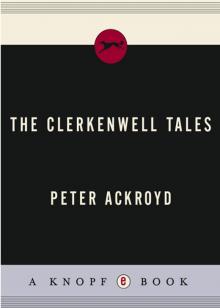 The Clerkenwell Tales
The Clerkenwell Tales The Canterbury Tales
The Canterbury Tales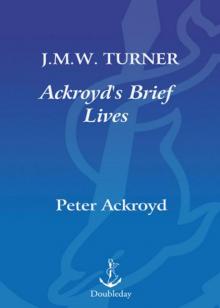 J. M. W. Turner
J. M. W. Turner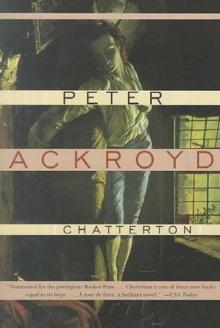 Chatterton
Chatterton The Canterbury Tales – A Retelling
The Canterbury Tales – A Retelling Alfred Hitchcock
Alfred Hitchcock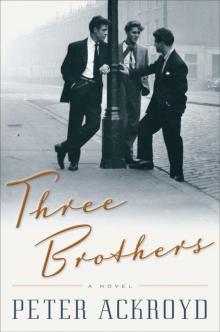 Three Brothers
Three Brothers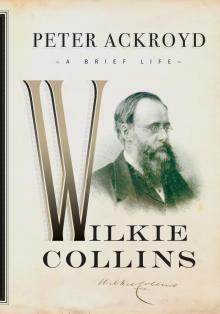 Wilkie Collins
Wilkie Collins Venice
Venice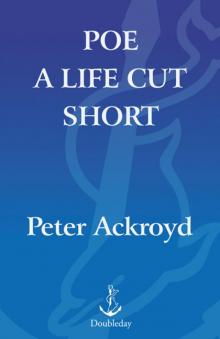 Poe
Poe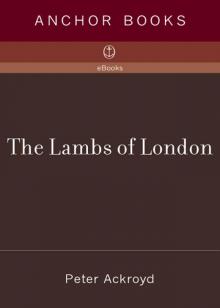 The Lambs of London
The Lambs of London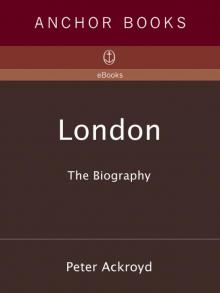 London
London Queer City
Queer City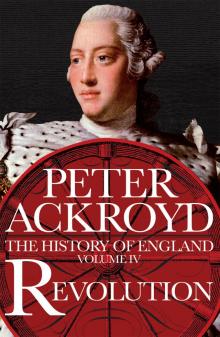 Revolution, a History of England, Volume 4
Revolution, a History of England, Volume 4 Venice: Pure City
Venice: Pure City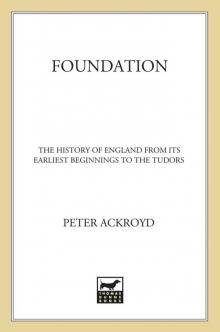 Foundation
Foundation Thames
Thames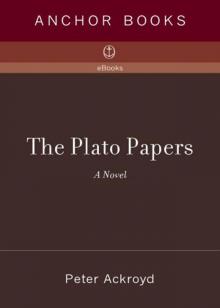 The Plato Papers
The Plato Papers The house of Doctor Dee
The house of Doctor Dee Rebellion: The History of England from James I to the Glorious Revolution
Rebellion: The History of England from James I to the Glorious Revolution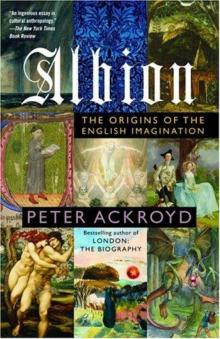 Albion: The Origins of the English Imagination
Albion: The Origins of the English Imagination The Fall of Troy
The Fall of Troy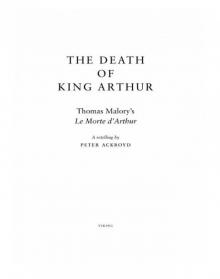 The Death of King Arthur
The Death of King Arthur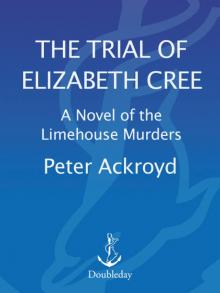 The Trial of Elizabeth Cree
The Trial of Elizabeth Cree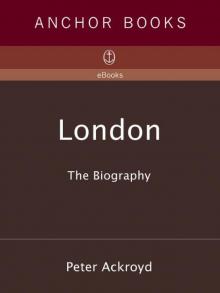 London: The Biography
London: The Biography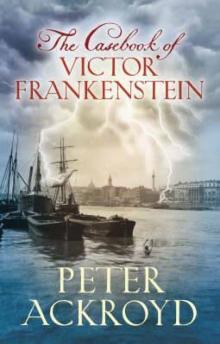 The Casebook of Victor Frankenstein
The Casebook of Victor Frankenstein Hawksmoor
Hawksmoor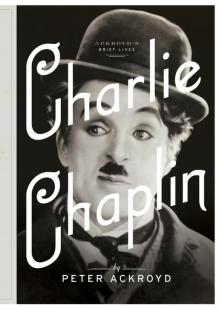 Charlie Chaplin
Charlie Chaplin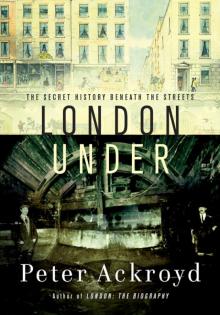 London Under
London Under